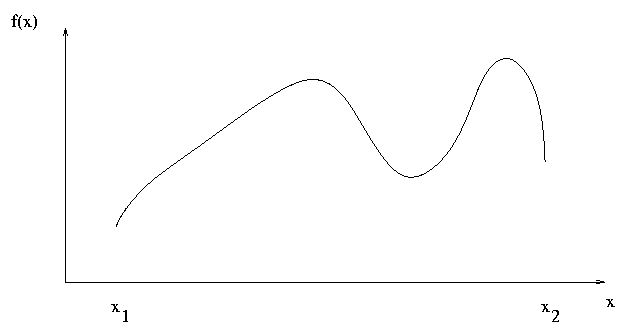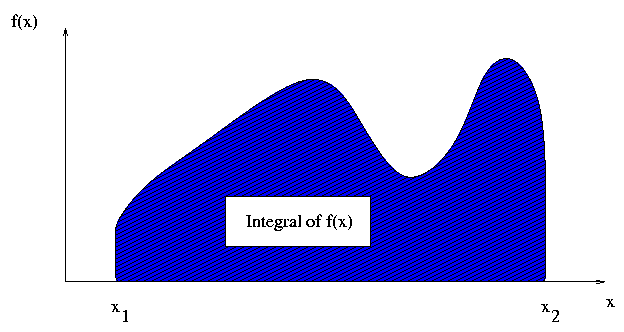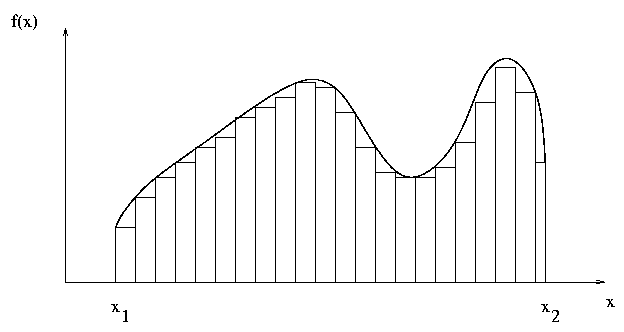
 Copyright © Michael Richmond.
This work is licensed under a Creative Commons License.
Copyright © Michael Richmond.
This work is licensed under a Creative Commons License.
2
f(x) = 2*x integral = x
f(x) = 1/x integral = ln(x)
Frequently, however, an analytic solution doesn't exist; in that case, it's necessary to integrate numerically. What does that mean?
If we draw a graph showing f(x) as a function of x,

then the integral is just the area under the curve:

How can we calculate this area? There are many ways, varying in sophistication, efficiency, and accuracy.
The easiest way is to use a Newton-Cotes method of order zero. That's a fancy way to say,
Graphically, that means

As the figure shows, this method only approximates the true area under function. One can improve the method's accuracy by making the intervals smaller, but that will take longer.
The smaller you make the pieces, the better the approximation. How small should they be? It depends on your purpose. One way to gauge the accuracy of the integration is to
One can use the absolute size of the change, or the fractional size of the change, as an indication of the accuracy of the integration. For example, suppose that a numerical integration of some function with different sizes for the pieces yields
absolute change fractional change
size of slice sum from previous from previous
-------------------------------------------------------------------
1.0 523.4
0.5 537.8 + 14.4 0.0268
0.25 540.3 + 2.5 0.0046
0.1 541.9 + 1.6 0.0030
0.05 542.4 + 0.5 0.0009
The difference between the sums with slices of width 0.1 and 0.05 is less than 0.1%, which probably means that the latest value is within about 0.1% of the true (but unknown) integral.
Given a termination criterion based on some desired accuracy, one can do an integral by iterating: start with wide slices, calculate the sum under the curve, then decrease the slices in width until the absolute or fractional change in the sum satisfies the criterion.
Last modified 3/30/2001 by MWR.
 Copyright © Michael Richmond.
This work is licensed under a Creative Commons License.
Copyright © Michael Richmond.
This work is licensed under a Creative Commons License.